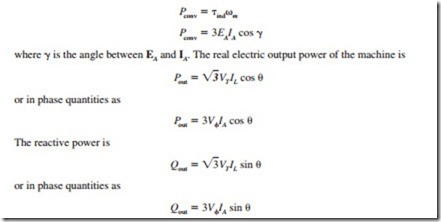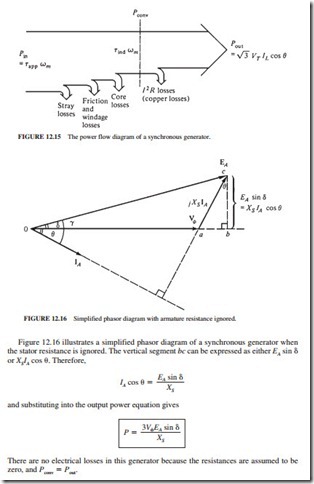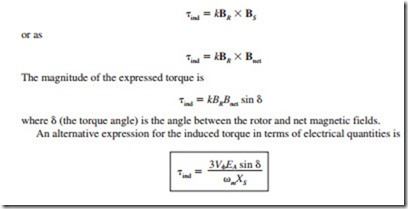POWER AND TORQUE IN SYNCHRONOUS GENERATORS
A synchronous generator is a machine that converts mechanical power to three-phase electric power. The mechanical power is given usually by a turbine. However, the rotational speed must remain constant to maintain a steady frequency.
Figure 12.15 illustrates the power flow in a synchronous generator. The input mechanical power is Pin Tappwm, while the power converted from mechanical to electric energy is
The output power equation shows that the power produced depends on the angle o (torque angle) between Vcp and EA. Normally, real generators have a full-load torque angle of 15 to 20°. The induced torque in the generator can be expressed as
Related posts:
ELECTRONIC CONCEPTS AND MORE INTERESTING THAN YOU THINK:ELECTRICITY AND ELECTRONICS
SUMMARY of The Magnetization Curve and Inductance
Optoelectric Devices:light-emitting Devices
Signal-carrying switches:Noise
summary Of Inductance
Instrumentation of an Engineering System
Cooling System part3
Lighting Circuits:Domestic Installation Types
Fixed Appliance and Socket Circuits:Definitions
Summary of Field effect transistors (Fets)
Tools and Equipment:storing Hand and Power Tools
INTRODUCTION TO MACHINERY PRINCIPLES:MAGNETIC BEHAVIOR OF FERROMAGNETIC MATERIALS
Variable Frequency Control:Solid-State Control
Fuel System – Carburetor Service (part2)


